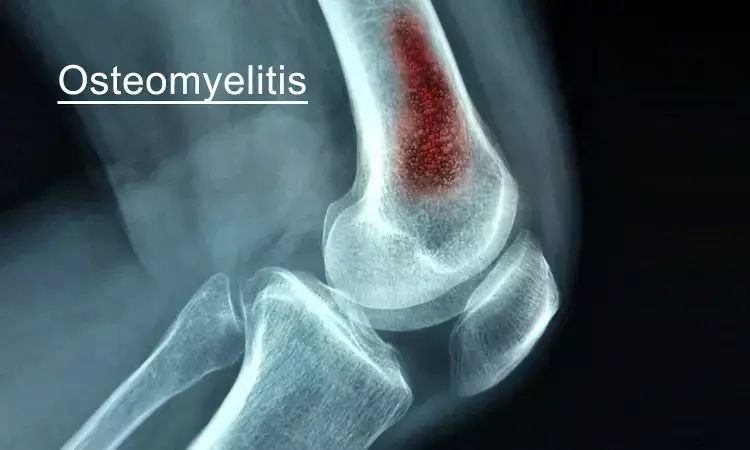- Home
- Medical news & Guidelines
- Anesthesiology
- Cardiology and CTVS
- Critical Care
- Dentistry
- Dermatology
- Diabetes and Endocrinology
- ENT
- Gastroenterology
- Medicine
- Nephrology
- Neurology
- Obstretics-Gynaecology
- Oncology
- Ophthalmology
- Orthopaedics
- Pediatrics-Neonatology
- Psychiatry
- Pulmonology
- Radiology
- Surgery
- Urology
- Laboratory Medicine
- Diet
- Nursing
- Paramedical
- Physiotherapy
- Health news
- Fact Check
- Bone Health Fact Check
- Brain Health Fact Check
- Cancer Related Fact Check
- Child Care Fact Check
- Dental and oral health fact check
- Diabetes and metabolic health fact check
- Diet and Nutrition Fact Check
- Eye and ENT Care Fact Check
- Fitness fact check
- Gut health fact check
- Heart health fact check
- Kidney health fact check
- Medical education fact check
- Men's health fact check
- Respiratory fact check
- Skin and hair care fact check
- Vaccine and Immunization fact check
- Women's health fact check
- AYUSH
- State News
- Andaman and Nicobar Islands
- Andhra Pradesh
- Arunachal Pradesh
- Assam
- Bihar
- Chandigarh
- Chattisgarh
- Dadra and Nagar Haveli
- Daman and Diu
- Delhi
- Goa
- Gujarat
- Haryana
- Himachal Pradesh
- Jammu & Kashmir
- Jharkhand
- Karnataka
- Kerala
- Ladakh
- Lakshadweep
- Madhya Pradesh
- Maharashtra
- Manipur
- Meghalaya
- Mizoram
- Nagaland
- Odisha
- Puducherry
- Punjab
- Rajasthan
- Sikkim
- Tamil Nadu
- Telangana
- Tripura
- Uttar Pradesh
- Uttrakhand
- West Bengal
- Medical Education
- Industry
Is FDG PET/MRI better than 18F-FDG PET/CT in diagnosing osteomyelitis: Study

In a new study published in the European Journal of Hybrid Imaging, suggests that 18F-FDG PET/MRI is an effective alternative to 18F-FDG PET/CT in the diagnosis of osteomyelitis.
In the complex diagnostic work-up of osteomyelitis, modalities including magnetic resonance imaging (MRI) and 2-[18F]-fluoro-2-deoxy-D-glucose (18F-FDG) positron emission tomography, coupled with computed tomography (PET/CT), are frequently utilized. Based on the opinions of experts and past qualitative research, PET/MRI is a relatively new hybrid modality with proposed uses in bone infection imaging. Compared to 18F-FDG PET/CT, 18F-FDG PET/MRI offers the benefits of a lower radiation dosage, more soft tissue data, and is thought to be more useful for surgical planning.
A nuclear medicine doctor and a radiologist retrospectively evaluated 36 patients who had 18F-FDG PET/MRI images for possible osteomyelitis. Sensitivity, specificity, and accuracy were assessed using the orthopedic surgeon's clinical evaluation as the gold standard (based on further intraoperative microbiology or long-term follow-up). Receiver operating characteristics (ROC) were used to measure and analyze standard uptake values (SUV).
The key findings of this study were:
1. The sensitivity, specificity, and accuracy of 18F-FDG PET/MRI were 78%, 100%, and 86% in this first research to statistically assess their diagnostic value.
2. The SUV max, target to background ratio, and SUV max ratio each had an area under the ROC curve of .736, .755, and .769, respectively.
3. These findings are comparable to the diagnostic value for 18F-FDG PET/CT imaging of osteomyelitis reported in the literature and are not statistically different.
In conclusion, the authors suggest 18F-FDG PET/MRI as an option to 18F-FDG PET/CT in the diagnosis of osteomyelitis, if accessible, based on the benefits of 18F-FDG PET/MRI indicated above and the diagnostic value presented here.
Reference:
Hulsen, D. J. W., Mitea, C., Arts, J. J., Loeffen, D., & Geurts, J. (2022). Diagnostic value of hybrid FDG-PET/MR imaging of chronic osteomyelitis. In European Journal of Hybrid Imaging (Vol. 6, Issue 1). Springer Science and Business Media LLC. https://doi.org/10.1186/s41824-022-00125-6
Neuroscience Masters graduate
Jacinthlyn Sylvia, a Neuroscience Master's graduate from Chennai has worked extensively in deciphering the neurobiology of cognition and motor control in aging. She also has spread-out exposure to Neurosurgery from her Bachelor’s. She is currently involved in active Neuro-Oncology research. She is an upcoming neuroscientist with a fiery passion for writing. Her news cover at Medical Dialogues feature recent discoveries and updates from the healthcare and biomedical research fields. She can be reached at editorial@medicaldialogues.in
Dr Kamal Kant Kohli-MBBS, DTCD- a chest specialist with more than 30 years of practice and a flair for writing clinical articles, Dr Kamal Kant Kohli joined Medical Dialogues as a Chief Editor of Medical News. Besides writing articles, as an editor, he proofreads and verifies all the medical content published on Medical Dialogues including those coming from journals, studies,medical conferences,guidelines etc. Email: drkohli@medicaldialogues.in. Contact no. 011-43720751


